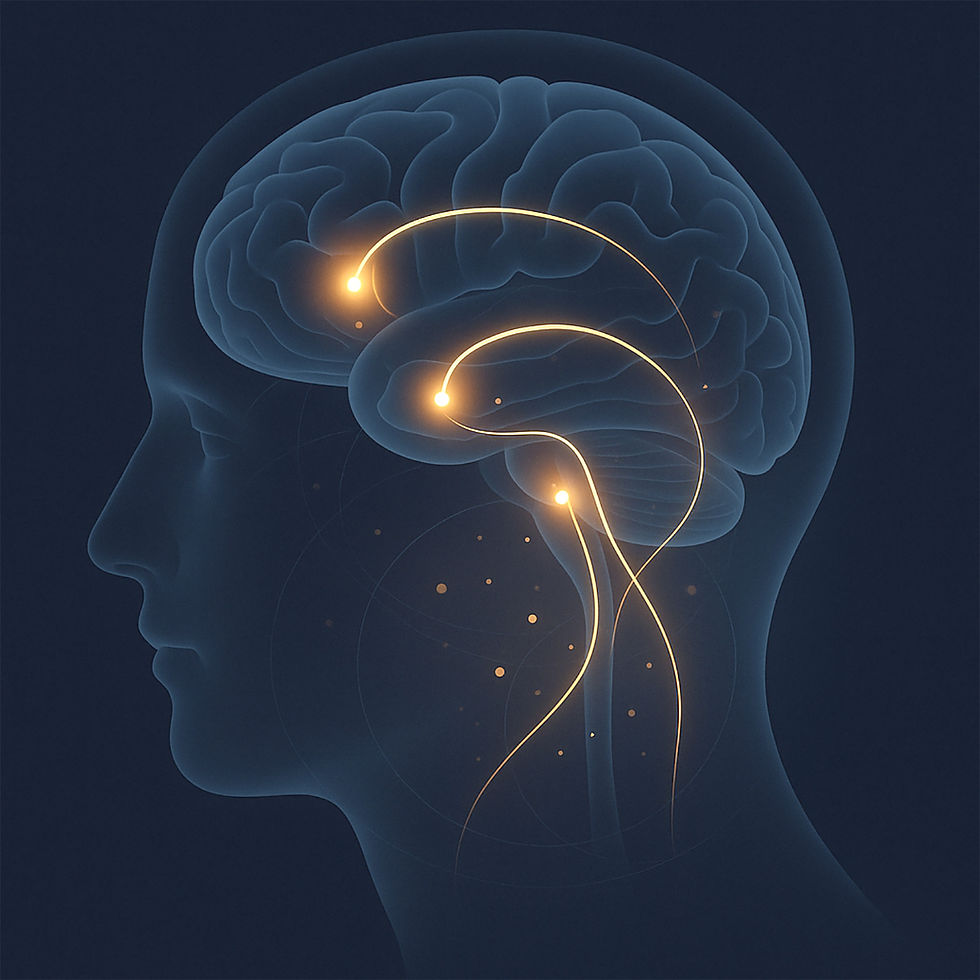Dopamine Demystified: Movement, motivation, meaning (#393)
- Rick LeCouteur
- Aug 17
- 3 min read

If you’ve heard that dopamine is the brain’s feel-good molecule, you’ve only got the movie trailer, not the full film.
Dopamine is less about pleasure itself and more about priority.
It helps your brain decide what to notice, what to pursue, what to repeat, and when to move.
Dopamine is motivation, learning, movement, attention, and reward, all braided together.
What Dopamine Does
Motivation & drive: Dopamine surges when you anticipate something valuable, not just when you get it. That lean-in feeling before you start a task.
Learning via feedback: Dopamine encodes reward prediction errors. Those tiny updates when reality is better or worse than expected. That’s how habits, skills, and even cravings are reinforced (or extinguished).
Movement: Dopamine helps initiate and smooth voluntary movement. Its loss is central to Parkinson’s disease.
Attention & salience: Dopamine highlights what matters right now, which is useful for goals, but also why click-bait can feel irresistible.
Body beyond brain: Dopamine signaling intersects with endocrine and immune systems; it’s not confined to mood.
Main Dopaminergic Pathways

Mesolimbic/Mesocortical Pathway (Ventral tegmental area or VTA → nucleus accumbens & prefrontal cortex): motivation, reinforcement learning, valuation, reward, and addiction.
Nigrostriatal Pathway (substantia nigra → striatum): motor control, specifically the initiation and execution of voluntary movements.
Tuberoinfundibular Pathway (hypothalamus → pituitary): hormonal regulation (e.g., prolactin).
The New Science
Not just a flood, but targeted whispers
For decades, many models treated dopamine release like a broad splash across circuits.
Emerging work shows it can also act with precise, local bursts, delivering information to specific branches of neurons.
Using advanced imaging (two-photon microscopy) in mice, researchers recently visualized discrete, spatiotemporally tuned dopamine signals. This finding hints at a richer dialect the brain uses to fine-tune learning, movement, and habit loops.
This shift matters. Better maps of where and how dopamine acts could refine therapies for Parkinson’s and addiction by targeting the right circuits, not just the whole neighborhood.
Myths vs. Facts
Myth: Dopamine = pleasure.
Fact: It’s mostly about motivation and learning; the anticipation spike often exceeds the "got it!" moment.
Myth: More dopamine is always better.
Fact: There’s a sweet spot. Too little impairs movement and motivation; too much can fuel impulsivity and compulsive behaviors.
Myth: Addiction is just chasing dopamine.
Fact: Addiction involves dysregulated dopamine, which causes a blunted response to everyday rewards plus hypersensitivity to cues and substances, alongside changes in prefrontal control networks.
How to Work with your Dopamine
You can’t hack a neurotransmitter, but you can shape the conditions it works in.
Sleep like it matters. Because it does! Deep and REM sleep recalibrate dopamine receptors and learning circuits. Protect a consistent 7–9 hours.
Earn your hits. Pair effortful behaviors (a workout, focused work sprint, practicing an instrument) with small, immediate rewards. You’re teaching your brain that effort predicts value.
Use novelty sparingly. Rotate new stimuli (playlists, routes, recipes), but don’t binge novelty; too much erodes satisfaction and attention.
Break the cue-craving cycle: Hide the triggers and add small obstacles. Move tempting apps off your home screen, stash snacks out of sight. With fewer triggers, the urges will fade.
Move daily. Aerobic exercise reliably boosts mood and task engagement by nudging dopamine and its receptors in a healthy direction.
Mind the cheap dopamine. Rapid-fire scrolling and ultra-processed snacks deliver frequent spikes with shallow learning; they raise the bar for normal life to feel engaging.
Why This Matters
Parkinson’s disease:
It’s not only replace dopamine.
It’s where and when you replace or mimic it.
Circuit-specific strategies may improve outcomes and reduce side effects as we learn more about localized signaling.
Addiction & compulsions:
Better understanding of micro-signals could refine prevention (weakening cue-reward links) and recovery (strengthening natural rewards and executive control).
Rick’s Commentary
Dopamine doesn’t make you happy.
It makes you curious, focused, and persistent.
And then it teaches your brain what was worth the effort.
By designing your environment and habits to reward meaningful actions, you let dopamine do what it does best:
Help you build a life you want to repeat.



Comments